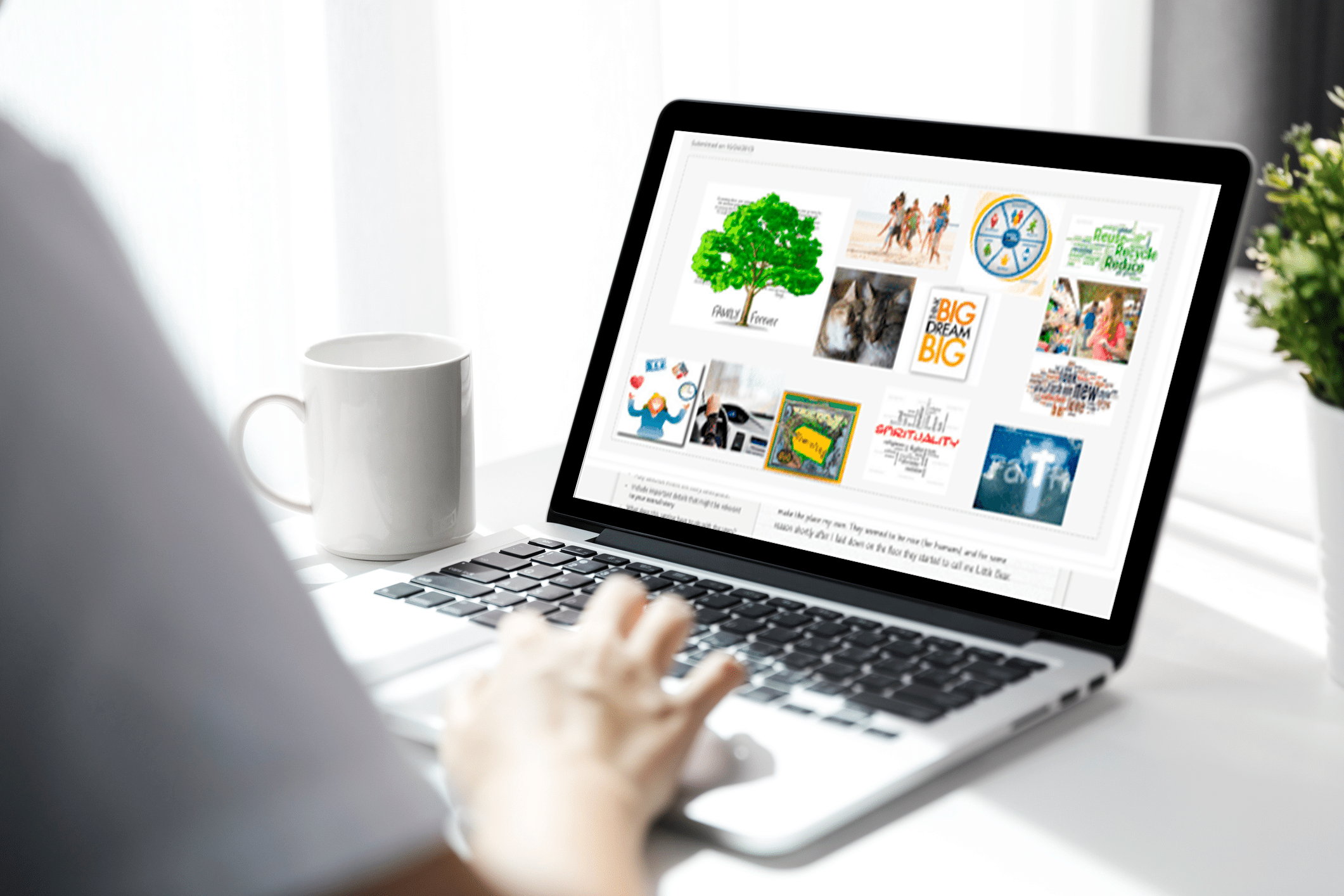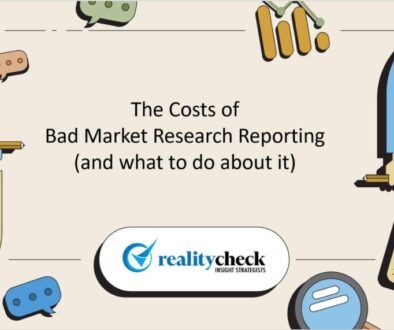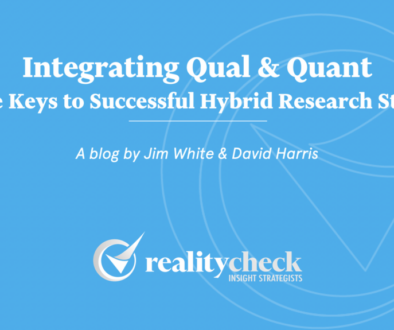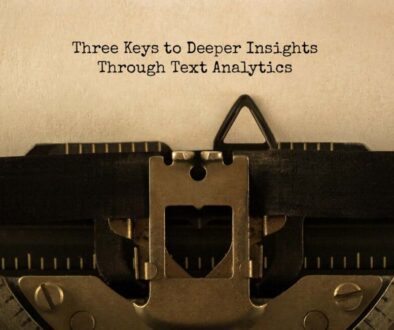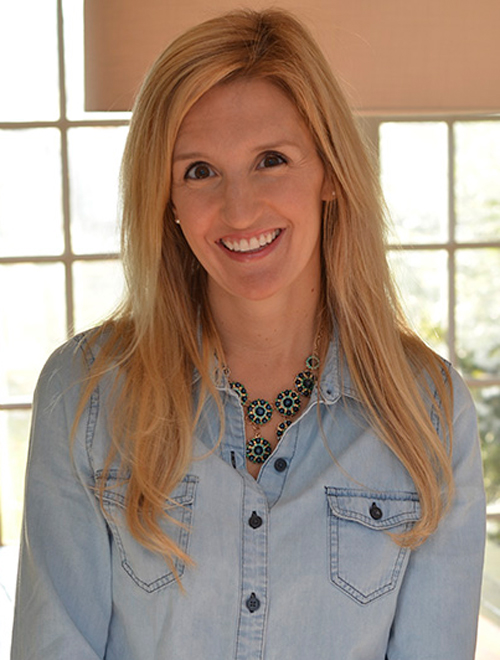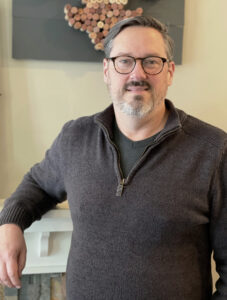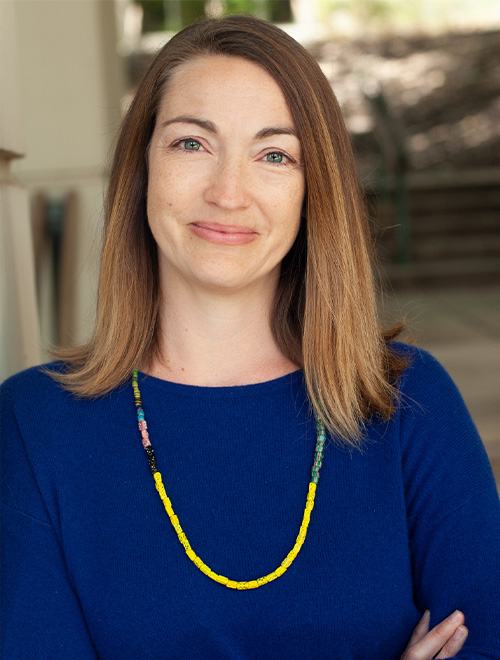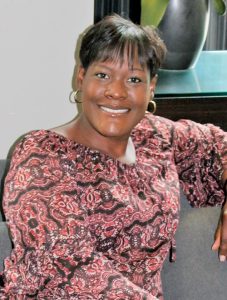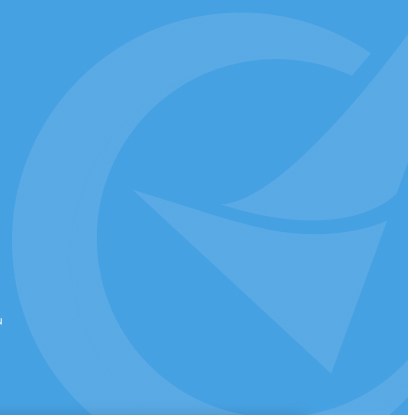Market Research Strategies for Brand Insights Teams: Using Technology to Dig Deeper
Jim White is the co-founder of qualitative market research firm RealityCheck. Jim has more than 20 years of experience in consumer insights, marketing and strategy working for Fortune 500 brands. As an advocate of online qualitative research and analysis, he has been instrumental in the design and development of online research platforms and analytical approaches for RealityCheck.
Based on conducting hundreds of online qual studies, this is his take on using insights technology for both consumer and B2B market research studies.
What kind of market research projects do you do for your clients?
We call ourselves a human insights company, which means that in everything we do, we explore the whole human being; not just the consumer part of people.
We do this in three primary areas. The first is foundational research for strategic development; what we call Deep Story exploration, which means understanding people’s lives, tensions and relationships with brands. Our clients use Deep Story exploration for developing positioning and brand architecture, messaging strategy and product innovation and renovation. In a nutshell, it gives clients a deep foundational understanding of the people that they’re marketing to.
The second type of research is concept testing. The most frequent types of concepts we find ourselves working on are advertising and Big Idea concepts, packaging concepts and new product ideas. Our process, which we call Narrative Power Analysis, identifies the most powerful elements of concepts to help brands tell their stories. We identify the strengths and weaknesses of concepts and help our clients decide which to move forward with and how to optimize them.
The final type of research we do is customer experience or CX insights. We track decision journeys and explore people’s experiences with brands. Of course, we take a human insights approach to everything, so we call our process HX, for Human Experience. We’re interested in the humanizing decision journeys and brand experiences for our clients.
The human journeys we study can be short and fleeting like people shopping for packaged goods online or in retail settings. Or they might be more long term, such as tracking parents and high school students over the course of a year while they select a college.
RealityCheck was an early adopter of online insights technology. What was your first experience with using Online qual research tools?
Back in 2005, we built our first online platform largely out of fear. We were afraid that we were going to wake up one day and be put out of business by digital technology. When we saw the growth of the Internet, the advance of social media and the ability that people had to communicate digitally without having to make the effort to fly to a market to do focus groups, ethnographies, or individual interviews, it got our attention. We thought, “Boy, we better get into this online thing or we’re going to be left behind.”
Our first experience with online qualitative was with digital ethnography. We wanted to build a platform that allowed us to get closer to moments of brand experience than we can get in face-to-face settings. What we found is that digital technology does an even better job. It allows you to “be there” when a customer has that spontaneous experience with brand usage or when they gather information on the Internet or shop in a store. They can share that with you online without the obtrusiveness of having a research team hovering over them or a camera person recording what they’re doing. What we discovered was that digital tools really provided a way for ethnography to be much more unobtrusive.
Many years later, we still do quite a bit of face-to-face qualitative research, but the role of online qual is a large part of our model.
What’s changed since then?
A lot.
First, the technology has gotten a lot better. You can do so much with online qualitative these days. You can now conduct live streaming webcam interviews. This experience is much better than it was back when we first started. You have digital white spaces where respondents can create perceptual maps, collages, and a whole host of things that allow for projective techniques. And, thanks to faster Internet speeds, people can upload video and images to give us a deep understanding of their lives and experiences much more easily than we used to. Those are just a few of the technological improvements.
Secondly, people have become more tech-savvy and more capable of doing things digitally. The average person is just more comfortable doing things like uploading videos and photos because they do it all the time through social media. This really cuts across age segments and different demographic segments because almost everyone has that capability. Additionally, people are accustomed to sharing their own lives online. Social media has really trained people and prepped them for us. Granted, people sometimes create an image of their lives on social media that is contrived. So, you still need trained researchers to create online activities and moderate in a way to get at the truth of people’s lives. But the point is, people are increasingly used to expressing something about themselves online.
So, I would reiterate that the advancements in technology and the savviness and capability of consumers really have made online qualitative increasingly important as a research tool.
How does RealityCheck use online qual for your projects?
I believe many people still think online qualitative is a replacement for face-to-face qualitative. They inaccurately assume you should turn to online qual when you can’t do the face-to-face research. But that is not the right way to think about online qual.
It really is its own animal. It is its own methodological option. And you need to think of it that way to take full advantage of the technology.
There are some instances in which online qualitative research often works better than face-to-face. Ethnography is one of them. Oftentimes, we will combine a face-to-face or in-home interview ethnography project with a larger scale digital ethnography. We have found that in comparison to face-to-face, we can capture better and more detailed information about peoples’ lives digitally when it’s done within the flow of their everyday life. We then treat the face-to-face portion of the research as a follow-up.
Similarly, in terms of concept testing, we’re able to expose stimuli such as packaging, TV ads, or digital advertising to people much more efficiently with online qualitative than we ever could do via a face-to-face setting.
If you’re not thinking of online qualitative as something different from face-to-face qualitative, you’re probably not going to take full advantage of everything it can offer. We really believe it’s a third way to do research. There’s qualitative research that’s face-to-face. There’s quantitative research. Now there’s this new third type – online qualitative. It is its own set of methods and you really need to think of it that way.
With the multitude of options for online qual platforms and one-off tools, what kind of tool do you prefer?
With our clients, because we’re doing custom studies for them, we prefer a platform that allows maximum flexibility and creativity. When we’re designing studies, we have some thoughts about what we’d like to do with consumers and the insights we’re trying to gather.
The platform we like to work with enables us to creatively get what we want as opposed to a platform that is more constraining. For instance, if you’re working with a platform that is only an online focus group platform, an online IDI platform, or one that is primarily a digital chat space, you’re really limited in what you can do. Instead, we like to be able to start with study design and a clear idea of what we want people to do. Then, we work with a platform that’s flexible enough to allow us to realize the creative design we want to execute.
We use the Aha! online platform most frequently for that very reason. Maximum flexibility and maximum creativity are really what we look for, and we find that with Aha! It is an activity-based platform with functionality that ranges from digital white spaces for collage-building and perceptual maps; to video and image uploads; to streaming and webcam services for live IDIs and online focus groups. And much more.
How has using online benefited your clients?
A lot of clients are looking for more agile insights these days and online qual can deliver that. Online projects are just more efficient than face-to-face qual. Clients can do qualitative research without having to get on a plane and have their teams out of the office. That’s critical. You’re saving time as well as the money for the cost of travel. It’s not necessary to spend days in the field and put money into facility fees. Going online means the ability to have 30, 40, 60, 80 or more respondents all participating in an activity-based study at the same time. You just can’t do that with face-to-face qual. You can field studies in a matter of days rather than weeks.
But online qualitative also opens up a whole new set of possibilities to get deep insights. We used to be limited to traditional qualitative methods and then quantitative. But now we have this third set of options that really allows for creative study design. Increasingly these days, we conduct studies that are mixed methods that draw on traditional qual, online qual, and quantitative all in the same study. This is because these platforms now allow for that; they allow us to get deep insights — the right insights — and with fewer constraints and limitations. So greater efficiency, lower cost, more options and deeper insights are benefits to the client I see from online qual.
Where do you think qualitative research is going in the next few years? Is it going to change and how so?
I think that the proportion of qualitative research that’s done online is just going to keep growing. Right now, for our company, about 50 percent of the projects we do are completely online and another 50 percent are face-to-face. But often, our face-to-face qualitative projects have a digital component. We may do some online homework before we do focus groups, or we may combine digital and in-person ethnography.
The second thing I see is a blurring in the distinction between qualitative and quantitative research. Many of the projects we do these days combine qual and quant. This is because we’re dealing with one platform that can accommodate both quantitative measures and representative sample sizes, and qualitative activities and deep dives with respondents.
Increasingly, we do studies that start with a quantitative analysis that is followed by a qualitative deep dive. That’s not new. But what is new is the ability to do this all very quickly and efficiently because it’s done using the same platform. Now that’s truly agile.
It simplifies the analytical process because qual and quant data are in the same place. I can imagine a future where we no longer think in terms of qualitative versus quantitative in market research. Instead, there will just be insights.
The suppliers that will win in that future are those that focus on insight storytelling and delivering research regardless of the methodological platforms. You don’t have quant players and qual players anymore; you just have good research consultants who draw on whatever methods they need to tell a compelling story for the client. I believe RealityCheck is in that space now.

